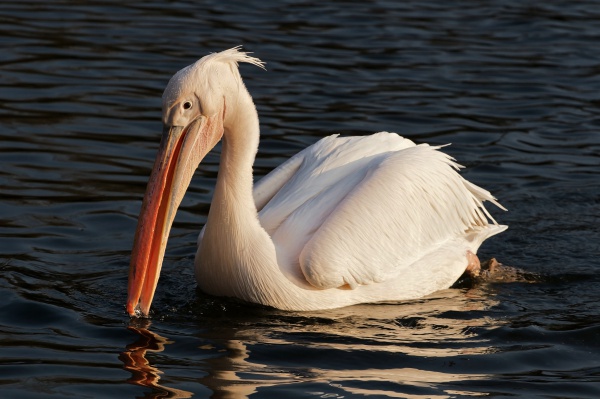Facts About Great white pelican
The great white pelican, sometimes referred to as the eastern white pelican, rosy pelican, or simply white pelican, is a captivating bird found in southeastern Europe, Asia, and Africa. With an impressive wingspan of up to 360 cm, it stands as one of the largest birds in existence. Fortuitously, it is not currently at risk, being classified as a species of least concern by the IUCN Red List. Various international agreements also extend protection to this species.
A notable characteristic of the great white pelican is its sexual dimorphism—males are noticeably larger and heavier than females. The bird's plumage is primarily white with striking black primary feathers and a subtle pink hue on the neck. In contrast, juveniles exhibit darker plumage and brownish underparts. These pelicans distinguish themselves from others with their unique plumage and distinctive facial skin coloration. While generally quiet, they do communicate through various low-pitched calls.
Great white pelicans breed in numerous regions across Africa and Eurasia, with notable colonies in Tanzania, Ethiopia, and Romania's Danube Delta. They migrate seasonally, relocating to different areas for breeding and wintering. Their diet mainly consists of fish, which they proficiently scoop up using their large pouches. These birds are highly sociable, frequently forming large flocks, and are perfectly adapted to life in aquatic environments.
Breeding seasons vary depending on the region. Colonies may nest in trees or on the ground, and females typically lay between 1 and 4 eggs, with an average of 2. Both parents share the responsibility of caring for the young, who usually fledge at around 65 to 75 days old. Nonetheless, these pelicans face threats from predators such as eagles, mammals, and crocodiles.
Although the great white pelican is not currently endangered, its population trends remain somewhat unclear. They face several threats, including overfishing, habitat loss, human disturbances, and pollution. In some regions, exploitation has led to population declines. Fortunately, conservation efforts are underway to protect these magnificent birds and their natural habitats.

 Ethiopia
Ethiopia